~ 29 ~
~ The Study of Threes ~
http://threesology.org
Researchers as of 8/29/2019
| Devil's Advocate Series: | ||||||||
|---|---|---|---|---|---|---|---|---|
| 1 | 2 | 3 | 4 | 5 | 6 | 7 | 8 | 9 |
| 10 | 11 | 12 | 13 | 14A 14B |
15 | 16 | 17 | 18 |
| 19 | 20 | 21 | 22A 22B |
23 | 24 | 25 | 26 | 27 |
| 28 | 29 | 30 A | 30 B | 31 | 32 | 33a | 33b | 33c |
| 34 | 35 | 36 | 37 | 38 | 39 | 40 | 41 A | 41 B |
On the previous page I was speaking about the three-patterned ensemble "mouth, gut, anus" and alluded to is as a possible metaphor for a more simplified and extensive underlying three-patterned occurrence. I suggested that the vagina swallowing (eating) sperm and its after-math activities of gestation and birth could be aligned with the notions of digestion and defecation. So too did I want to suggest that the primitive idea that the night swallowing the day giving rise to a new day is a similarity, as well as multiple other three-patterned associations taken outside the constrained context of biology, though many descriptions retain a link with animate activity such as birth- life- death; insanity- sanity- supersanity; unconsciousness- consciousness- superconsciousness; hell- purgatory- hell; bottom Earth- Middle Earth- Top Earth; Red- Yellow- Green stop lights, etc.... All of which exhibit some referential characterization to the mouth- gut- anus cyclicity.
I also gave mention of the idea referring to the adoption of a 3-meter grid of the Earth detailed by a 3-word location. In a very real sense, each time one encounters a pattern-of-three ensemble that may or may not be a full compliment of three words and/or symbols in that some defined processes may lack am observable sequence because it has been lost to time such as the precursor(s) of the two Germ layers followed by three Germ layers but no one Germ layer is being readily agreed upon as being visible, though the proferia (sponges) appear to be a likely candidate by some accounts.
Here is an illustration of the grid shown on the previous page for those who either need a visual point of reference or have come to this page without having seen the previous one:

Instead of the entire Earth, one might propose the same idea being applied to the solar system, galaxy and entire Universe. However, applying the grid idea to individual subjects like physics, math, biology, art, music, architecture, medicine, etc. has already been done in a limited sense. For example, we have a triplet genetic code graph of amino acids that are typically reduced to single letters in some instances and we have a three-particle atomic nuclei graph in physics. Color schemes for art use a 3-additive and 3-subtractive indexing and math is repetition of one number/symbol added, subtracted, divided, multiplied to another number to get a third number/symbol.
The foregoing comment brings to mind a 2-3-4 pattern involving mathematics that could be added to pg.14, and pg.27 in this series:
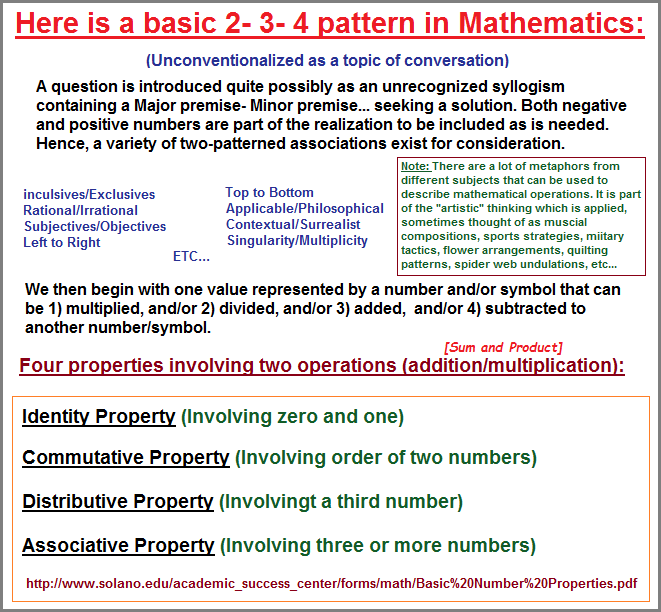
Whether it be the...:
- ABC's monogram of teaching children the English alphabet
- Three-colors of street-side vehicle and pedestrian signal lights
- Hegelian styled syllogism of Major- Minor/Premise- Conclusion
- Three particles or attributes ensembles in particle physics
- Holding a pen or pencil with three fingers
- Three tri-mesters of human female pregnancy
- Three sentence ending punctuations of period- question mark- exclamation point
- 1st- 2nd- 3rd molars description
- Subject- Object- Verb trio of languages
- Triads in music
- Three strikes out and 3-numbered bases in baseball
- 1-2-3 point shots in basketball
- Three Olympic medals
- Triple Crown of Horse Racing
- Triple Crown of professional bicycling and alternative bicycling events on national levels
- Trifecta horse betting
- Three face cards in a deck of cards
- Three layers of skin (Dermis- Epidermis- Subcutaneous tissue)
- Upper- Middle- Lower social classes
- etc...;
...All of the above represent a list of three names and/or symbols denoting a location in a given area of a subject's territory. They are individualized references to a very large grid that no one has taken the time to intersect, because "too" (a cognitively oriented "two") much of an egotistical level of personalized "ownership" has and is taking place, as if they were separate kingdoms to be guarded with particularized argots, vernaculars, idioms, etc., like gangs who adopt their own stylized graffiti, hand signals, passwords, clothing, internalized cultures with specialized awards and ceremonies, etc...
Whereas one calls a particularized research model a professional means of discriminating specificities, the word "discriminating" research orientations is not equated with an intellectual prejudice harboring sociological, psychological and philosophical dimensions akin to that seen on school grounds. While some are relaxing the prejudices taught to them in a given academic rigor or on-the-job requirements, and adopting a broader view of multiple subjects exhibiting one or another perceived relatedness, there remains an ongoing practice of severe prejudice in every single profession I have come to witness in action. The Black versus White is not limited to human race relations, because it exists in many different models of dichotomy throughout the human sphere of activity. Entire industries are setup to accommodate the practice of some controversy, some dispute, some polarization such as the wealthy/poverty, science/religion, sporting events, court battles, military campaigns, etc... Showing people they have the same color of blood and similar interests for basic biological requirements is not enough to portray the existence of an overall underlying grid of inter-activity.
What's worse is that we have established wealthy institutions like the Nobel Committees whose members retain the old way of thinking about how to judge what they perceive to be either progressive or innovative expressions of a given intellectual exercise, and thus help to perpetuate the self-centered territorial ownership relying on dichotomous orientations. They don't know how to think otherwise. But not only is this evident in such award institutions as the Nobel Committee, it can be seen in religions and governments, despite any claims to the contrary. All their efforts to the contrary are in fact support for perpetuating this "ownership" profile of distinction because they were established by a variation of this same type of perspective.
While the "what3words" usage to describe every place on Earth can be made useful if everyone or at least major social systems subscribe to the idea, the idea for a similarity of design to map out the entire domain of intellectual (mental) and physical activity of every single living and non-living entity will require a paradigm shift in human cognition. If we try to implement such to even a single subject such as biology, we are confronted by those who stake an ownership to a given domain or claimed sub-domain, and prejudicially assign peculiarities of orientation so as to effect what amount to as barricades, detours, sand pits, cliffs, bogs, illusions, delusions, sleight-of-hand digressions, etc., not to mention the academic hurdles of a degree, publishing, teaching, association membership, etc..., often involving an assumed arrogance of wanting to be associated with the presumed best, brightest, highest, richest, most creative, most innovative, brilliant, wise, etc., people and/or places and/or things.
While many come to inculcate a knowledge base involving a divergent array of information akin to venturing outside their commonly traversed intellectual boundaries, they may not say anything to a colleague or even a closer familial intimate; because such a sojourn might be interpreted as an act of slumming, instead of an activity akin to the prince and pauper story for increasing life experiences involving not only personal growth but the growth of that one is associated with.
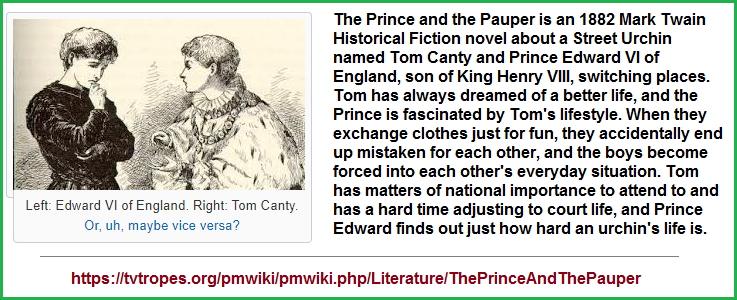
There are many dichotomies one might bring to the fore for exemplifying the travails of consciousness that frequently use animals (though not exclusively) in the tradition of Aesop's Fables. Note that he describes instances of one character, two characters, three characters and multiples of one character, though patterns-of-two, like that seen in the Yin/Yank series are the dominant portrayal:
|
|
There are of course multiple other two-patterned stories and associations that have a narrative not necessarily cast into the profile of being a bedtime story dealing with conflict, complementarity, fusion, digression, concrescence, etc., such as the turtle and the scorpion, coyote and roadrunner (cartoon), Jack and Jill (old primer school reading text in the U.S.), Democrats versus Republicans, fire/water, cops/robbers, God/Satan, etc...
In establishing the idea of a 3-word, 3-number, 3-symbol, 3-sound, 3-feeling, 3-nuance, etc. grid for all human (and no-human?) events, we have to ask if a pattern-of-three is most suitable when there are multiple other patterns available. Indeed, if a pattern-of-three is so valuable a commodity of the human mind, why then are there so many non- patterns of three? Why don't we simply perceive everything in a pattern-of-three so as to dispense with conflicts of interest? Is the presence of non-three ideas because non-threes actually exist, or because the human mind, undergoing a developmental transition is spinning its mental wheels in different stages of development due to genetic, nutrition and environmental conditions and the vagaries of human influences thereof?
If we are at present confronted by a humanity whose stage of presumed progressive mental development is akin to a species not ready for the usage of fire or wheel, much less horse and harness, no amount or type of philosophical interjections may be of value in correcting the situation since the repository of human knowledge and understanding must be repeated, and is often repeated incorrectly, abortively, or with little reflective thought or diligence of application.
In speaking of a "2-3-4" ensemble of a pattern-of-three as a recurring characteristic of human cognition which represents a grid, a few examples may be of value. For instance, the basic tic-tac-toe game, like many games and institutionalized activities, there is a two-patterned polarization that may function in a complementary fashion such as seen in courtroom contests (where judges in the U.S. frequently participate as a member of the team for one side over another instead of being an effective referee); everyday relationships, sports contests, scientific analysis, classroom debates, etc.., all of which may not achieve an equalizing scenario related to an acceptable equilibrium. More often then not there is a winner and loser, even if a tie is achieved... since the participating public that usually pays for their attendance does not get what they came for, since the game was not advertised as a form of gambling. Whereas in the game of chess there is the middle option of having achieved a stalemate or draw, the two-patterned of win/lose contrasted to the three-pattern of win-draw-lose is not appreciably understood in the larger context of an overall cognitive repetition playing out in different subjects, nor considered part of a timeline attribute.
Hence, in explanation of the "2" in the 2-3-4 arrangement, we have two sides in oppositional positions that may interact together in a complementary or symbiotic way, unless a type of parasitism is recognized. The "3" is seen in the functionality of movement strategy termed horizontal- diagonal- vertical. The "4" has to do with the outer parameter, but this not need be the case in every expressed 2-3-4 ensemble, where functionality can change hands, like different actors enabled to play the part of the other.
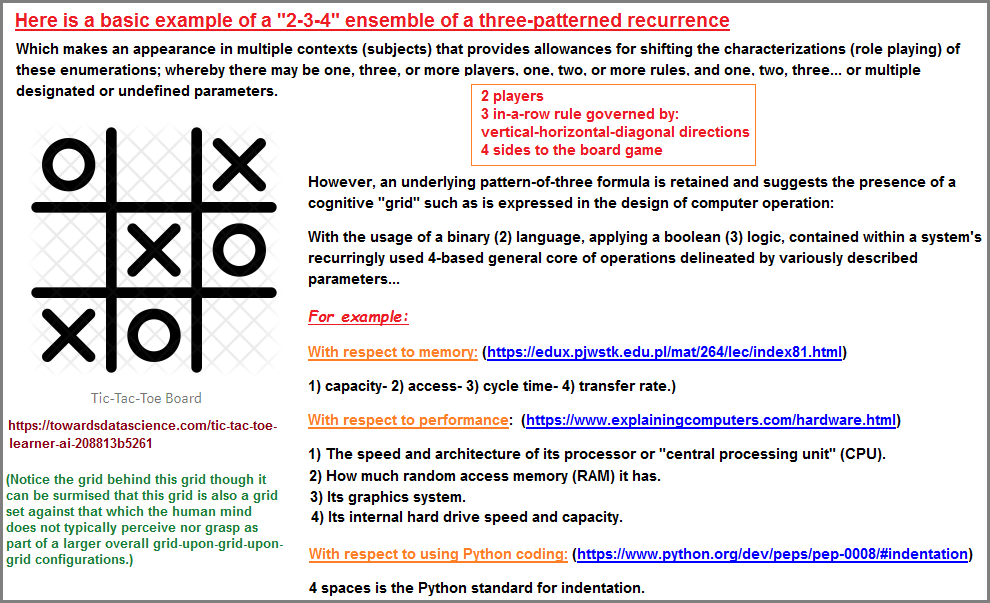
Hence, instead of two players there could be three or more. Instead of a 4-sided parameter a situation such as in/out, stop/go, right/wrong, up/down, etc., may define the overall contour of the 'game', exercise or activity, described as being serious, for fun, or a bit of both. Instead of three rules of play direction there be an imposed two, four, or multiplicity thereof. Yet the overall underlying triple pattern of players, rules and parameter is retained, no matter the shape, color, costumes (wardrobe), language, context, races, genders, ages, religions, governments, businesses, etc., involved. In comparison to the previous mouth, gut, anus ensemble-of-three which may be described as a pattern-of-one or pattern-of-two or pattern-of-multiplicity when describing less complex life forms, we can say that the mouth/anus are the "2", the germ layers are "3" (unless only the ectoderm-mesoderm are identified), or the in/out is the "2", with the underlying grid of DNA having its own incorporated 2-3-4, with a pairing of amino acids, a triple code, with the 4-bases (Adenosine, Cytosine, Guanine/Thymine or RNA's Uracil).
Stepping away from this and returning to the foregoing tic-tac-toe example, we can associate the games of checkers and chess as alternative expressions of the "2-3-4" ensemble:
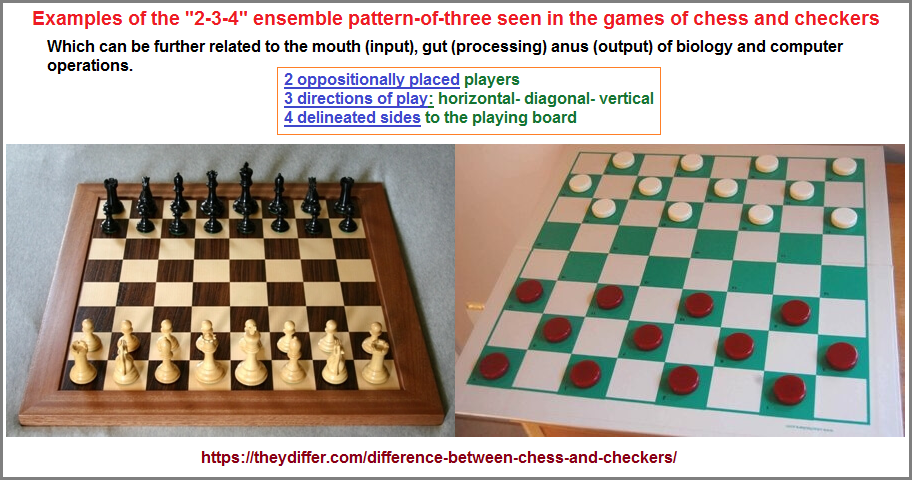
While there is no typically associated "64" squares layout in the game of tic tack toe, unless we count the multiple times the game may be redrawn or replayed, we do see this added feature when comparing the games of chess, checkers and amino acids layouts. Here is the "grid" layout of the amino acids for DNA, though substituting the "T" (Thymine) with a "U" (Uracil) will give us the RNA profile. We should also make note of the 3 stop and 1 start codon as an example of a 3-to-1 ratio:
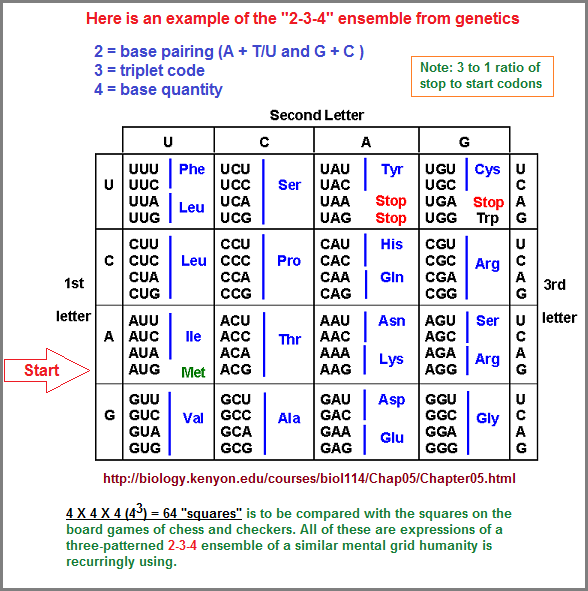
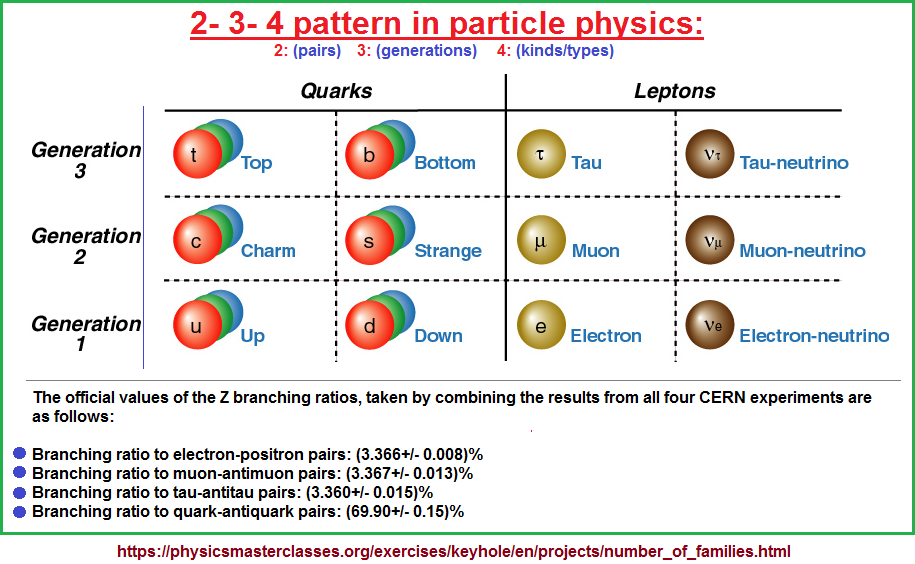
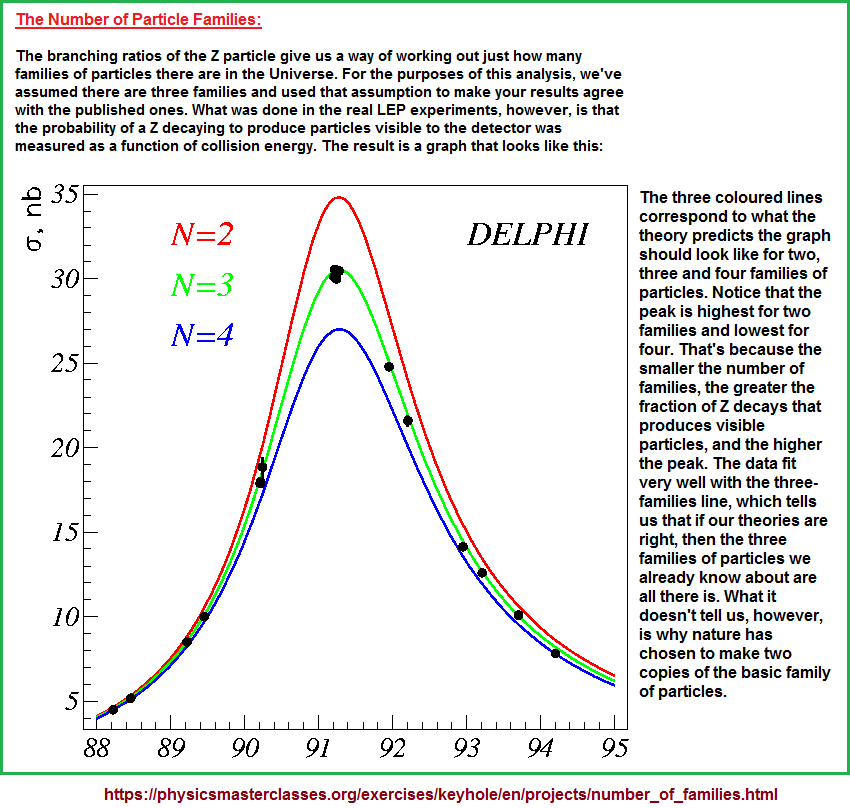
By developing a grid for a use within and between different subjects, an enhanced portrait of the overall puzzle(s) humanity is delving into from a variety of perspectives and approaches may help us acquire a larger panoramic view and comprehension of where we actually are (like climbing to the top of a tree or hill), in order to devise a better equipped expedition of where to go... or at least what vista appears to be more promising in providing a lucrative resource such as knowledge and experience.
In reflection, there are many different metaphors being used for expressing the grids within grids within grids experience(s) we have. Very often the grids overlay, like nets thrown over nets that may or may not create Gordian Knot situations that were created by actions of nature, by accident or sometimes intentionally, like early 20th century volunteer firefighters who deliberately set fires to "prove" to a skeptical public that a publicly funded fire department was needed. No less, other actions for creating Gordian Knot situations have been perpetrated by armies, secret services, politicians, police officers, school teachers, construction workers, forestry fire-fighters, boxing promoters, sports promoters, businesses working alone or together, family members, etc...
When I overlay the idea of a grid onto the preliminary timeline (using Gimp), we get the simplistic perspective:

While this image may not be very informative for some, to those who make use of a mental grid (often without being aware they are doing so or may refer to it as something else), it illustrates how biological activity, atomic matter, development of mathematics, etc., have their own segmented grid histories taking place within and alongside other grid occurrences in the three dimensions, that we can, in general, refer to movement (or stasis, or non-existence) in a horizontal, vertical and diagonal direction, though not necessarily in this order or in the customary way of thinking in terms of "times arrow".
A timeline is a grid regardless of the information was is focusing on and that which is not being considered as part of the observation. While some may want to view the overall events in terms of a massive "butterfly effect", this statement alone does not provide us with details... details that may be so minute that our human brains do not have a means of cataloguing nor appropriately assessing because of what appears to be environmentally influenced genetic impositions which force us to use a small amount of referencing tools in repetitive ways. Nonetheless, the idea of a "grid-ed" timeline can provide some readers with the perspective of organization, though for the flamboyance of some visualizers, the grid gives them the impression of a mechanized system of perception that does not allow for spontaneity nor fluidity because all perceptions appear to be "boxed up". Indeed, if the constraints I am seeing in human cognition are correct, then we are confined to a box. However, before devising someway to remove ourselves from the box, we need to fully recognize that we are in one. A thought which brings to mind an old twilight zone episode called Five Characters in Search of an Exit, involving three questions (that was narrated by Rod Serling as the Whys, the Whats and the Wheres):
- Where did we come from?
- What are we supposed to do while we're here?
- What happens next?
Here is a lengthy radio version: The Twilight Zone Radio Show - Episode 61 - Five Characters In Search Of An Exit (AUDIO BOOK: 35:06 duration)
Here is a short 3:37 minute clip exposing the overall highlights, though the entire episode is worth watching for those who like drama:
Five Characters in Search of an Exit
The characters are bits of information, be it in a specific orientation of study or the "bits" assigned to computer data. The framework in which they are aligned (or assigned) are part of what can be viewed as a timeline grid of occurrence where we had previously encountered the topic of mouth- gut and anus, and to which, in computer language, we can associate the notions of input- processing- output.
Origination date: Friday, October 12th, 2019... 3:01 AM
Initial Posting: Friday, October 12, 2019... 12:33 PM
Updated Posting: Friday, January 20th, 2023... 12:21 PM
Herb O. Buckland
herbobuckland@hotmail.com